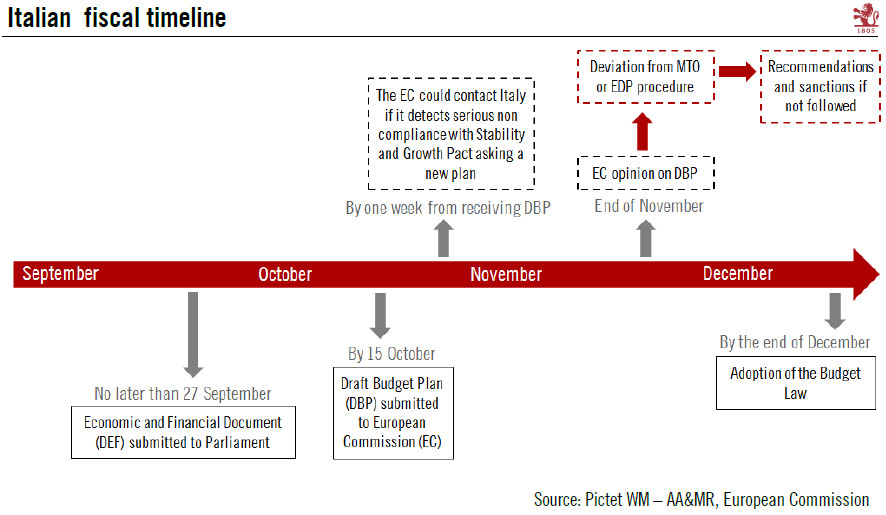Tensions between Rome and Brussels could lead to significant market volatility before an agreement is found.
September will be a key month for gauging the Italian government’s budgetary plans for 2019. The government has communicated neither a precise timeline for implementing the measures announced in its ‘contract for government’ nor a precise cost analysis for these measures.
In this contract, the governing coalition, made up of the Five Start Movement (M5S) and the League, committed to a significant degree of fiscal easing via measures such as a flat tax and a partial roll-back of the 2011 Fornero pension reform, as well as a kind of universal basic income. These measures, if fully implemented, would likely prove very costly and thereby derail Italy’s debt dynamics (according to an estimate made by one think tank, the government’s plans could cost between 6.2% and 7.1% of GDP).
The Italian government will need to submit its draft budget plan to the European Commission by October, leading to a period of negotiations. The road to an agreement is likely to be bumpy before the Commission announces whether the Italian budget complies with EU rules or not at the end of November.
An agreement on the draft budget will depend on the fiscal flexibility that the Commission is willing to give Italy:
All in all, there is room for the Commission and the Italian government to find an agreement on fiscal spending, but the road is likely to be quite bumpy and lead to significant market volatility. |
Italian Fiscal Timeline |
Tags: Italy budget plan,Macroview,newsletter





























